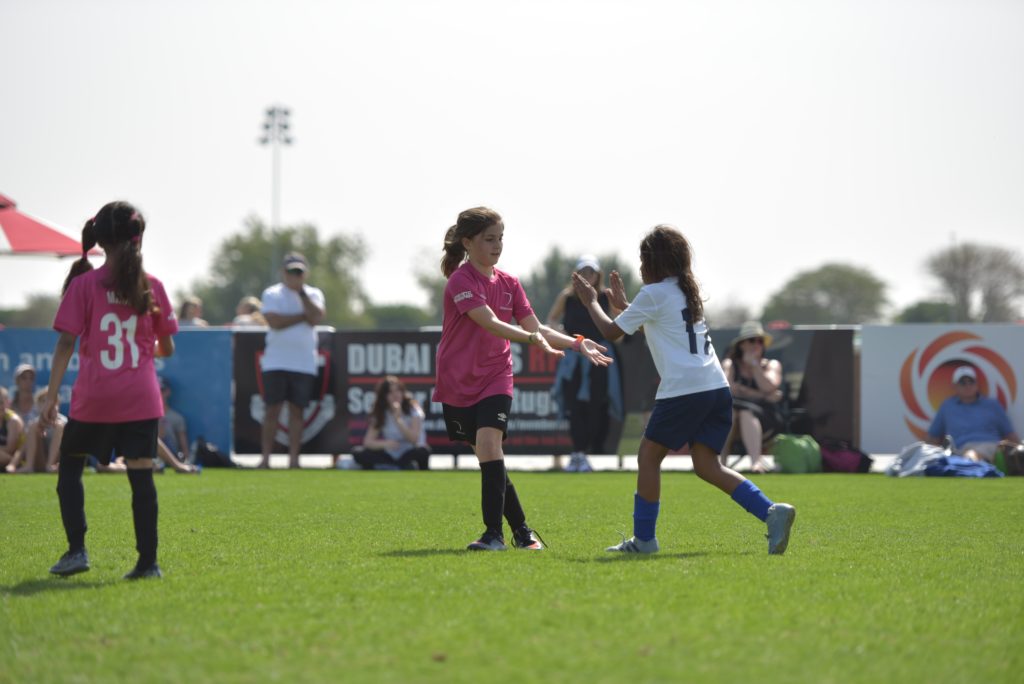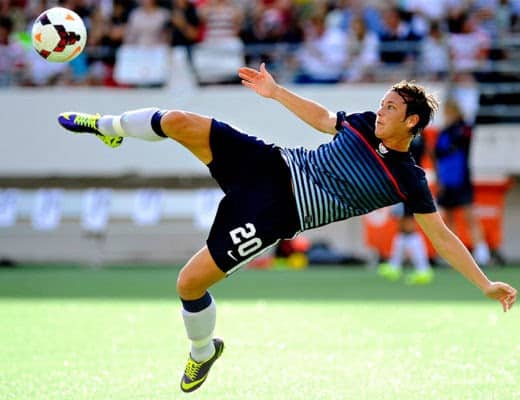Where does President Biden’s new “Equality Act” fit into the world of sports and more specifically, what does it mean for our kids?
At Kids in the Game, we believe every kid should have a chance to play. We share a common goal to provide positive experiences and opportunities through sports and creative play. Today, we want to unpack President Biden’s new ‘Equality Act,’ and how it fits into the world of sport across the country, as well as right here in New York City and in our programs.
Within weeks of his inauguration, President Biden has hit the ground running by immediately placing executive orders in numerous departments. Several of his statements have been on the topic of health care reform, COVID-19 vaccine rollout, immigration policies, and more. As an organization rooted in youth development, each of these pieces are pivotal in our recovery from the past year. One topic that received mixed reviews in the press was Biden’s executive order to prevent discrimination based on gender identity or sexual orientation. This has particularly sparked discussion in the context of athletics — and who can and can’t compete.
So what does this mean for youth sports? How does this legislation help or hinder inclusion in our space?
Throughout history, the inclusion of non-cisgendered athletes on specifically men’s or women’s teams has been a frequent point of contention. Critics of non-cisgender inclusion on gender-specific teams (e.g., non-cis women on women’s teams) often rely on negative stereotypes based on gender and capability as the basis for their argument. Some would say the addition of these athletes creates an imbalance or inequity because they cannot compete at the same level as cisgendered athletes; they are either athletically superior to cisgendered women or inferior to cisgendered men. Some critics even suggest that women’s-only sports are meant to provide a space for women to compete at a level that requires less athleticism. However, history has shown this to be untrue given the number of women who now dominate the sports world. Athletes like Abby Wambach or Serena Williams prove that division on the simple basis of gender in sports is becoming more and more irrelevant when determining who is the “best.”
Skeptics of non-cisgender inclusion in men’s and women’s sports also reference muscle mass capability and hormone production as reasons why inclusion might create inequities. However, when Caster Semenya, a Black South African runner who identifies as a woman, wowed viewers around the world with her insane speed, the public’s reaction was telling of a much greater societal issue. Even her fellow sprinters used slurs and discredited her success by promoting negative stereotypes about her body and gender, with some even going so far as to allege that she was a man competing in women’s sports. Countless media outlets covered this event and its discourse, all the while only skimming the surface of the issue at hand. What they were pushing against was not her speed, her athleticism, or her credibility in general — it was her femininity and gender expression that they were not okay with. Her body was ridiculed for its “masculine” characteristics because it did not conform to public perceptions of what women should look like. These biases are also evident in the argument to exclude non-cisgender athletes because they do not conform to what others perceive as the traditional gender expression of men and women athletes.
President Biden’s executive mandate to end basic discrimination based on gender identitiy or sexual orientation has major implications for athletics and youth sports particularly. This bill is not dissimilar to the actions that arose from genderless bathroom mandates back in 2014 (ACLU). By publishing this order, especially so soon into his presidency, President Biden is setting the tone for the next four years — creating a society that is hopefully moving away from hatred and discrimination, instead of towards it. This gives us great hope for our team, our kids, and our community.
Some may argue that this will come as a disadvantage to girls and women in sports (Wall Street Journal). Here are a few reasons we don’t think that’s true. By creating a space that is free of discrimination based on sexuality and gender identity, this bill is simply providing a more welcoming and inclusive space for all participants. To include everyone is to progress the environments in which we live. Especially in youth sports, many children who have gender dysphoria or may be questioning their gender / sexual orientation often feel pigeon-holed into a binary choice, due to the existing structure of men’s and women’s athletics. This is likely a driving factor of athletes dropping out around the age of puberty and into high school, something we are working every day to address head on. By upholding these anti-discrimination clauses, coaches can break down the barriers that have harmed many youth — while at the same time, starting the conversation about our divisions in athletics altogether.
Last year, one of our 2020 resolutions was to improve equal participation between girls and boys in our programs. Whether in after-school, on our sports teams, in our camps, or years down the road, we want to encourage our young female leaders to be in the game and stay in the game. We’re particularly focused on the alarming rates of drop-out for girls in middle school sports. As we continue to progress, we’re asking ourselves new questions.

Is only two categories of teams enough? Why are so many of us still hesitating to have that conversation? Where are those feelings really coming from? How can we, as an organization committed to greater inclusion, acknowledge the discomfort felt by some to create space for more youth to excel?
Inclusion for all includes non-binary and transgender people. By enforcing a ban on discrimination on the basis of sexuality or gender identity, the tone of the sports industry is being shifted for good. In the case of youth sports and development, an inclusive environment goes far beyond helping kids become strong athletes. The benefits for each child’s individual growth include increased social intelligence, as well as heightened emotional intelligence and perception.
One of the core reasons we exist is to foster a positive sense of self in kids. We are also committed to fostering equity and inclusion in our programs, giving every child a sense of belonging, the opportunity to succeed, and the chance to build their confidence.
86% of our kids in after-school programs feel confident to try something new.
KIDS IN THE GAME
The Equality Act, as it has been named, provides non-discrimination protections for the LGBTQIA community that goes beyond athletics. The bill can be seen as a supplement to the 1964 Civil Rights Act — which does not have any mention of preventing discrimination on the basis of sexual identity or expression. In many instances, this might go unnoticed in our day-to-day lives. However, for many, having these words amended to governmental level legislation is an enormous stride in the direction of equality and justice for all.
The Civil Rights Act was a hard fought piece of legislation, and we are still working to protect the basic civil rights of marginalized groups, regardless of their ethnicity, race, or religion. With the Equality Act expanding rights for the LGBTQIA community, we are hopeful that sexual orientation and gender expression will continue to be respected and protected well into the future. For now, we still have work to do.
Learn more about the basics of the Equality Act here.



